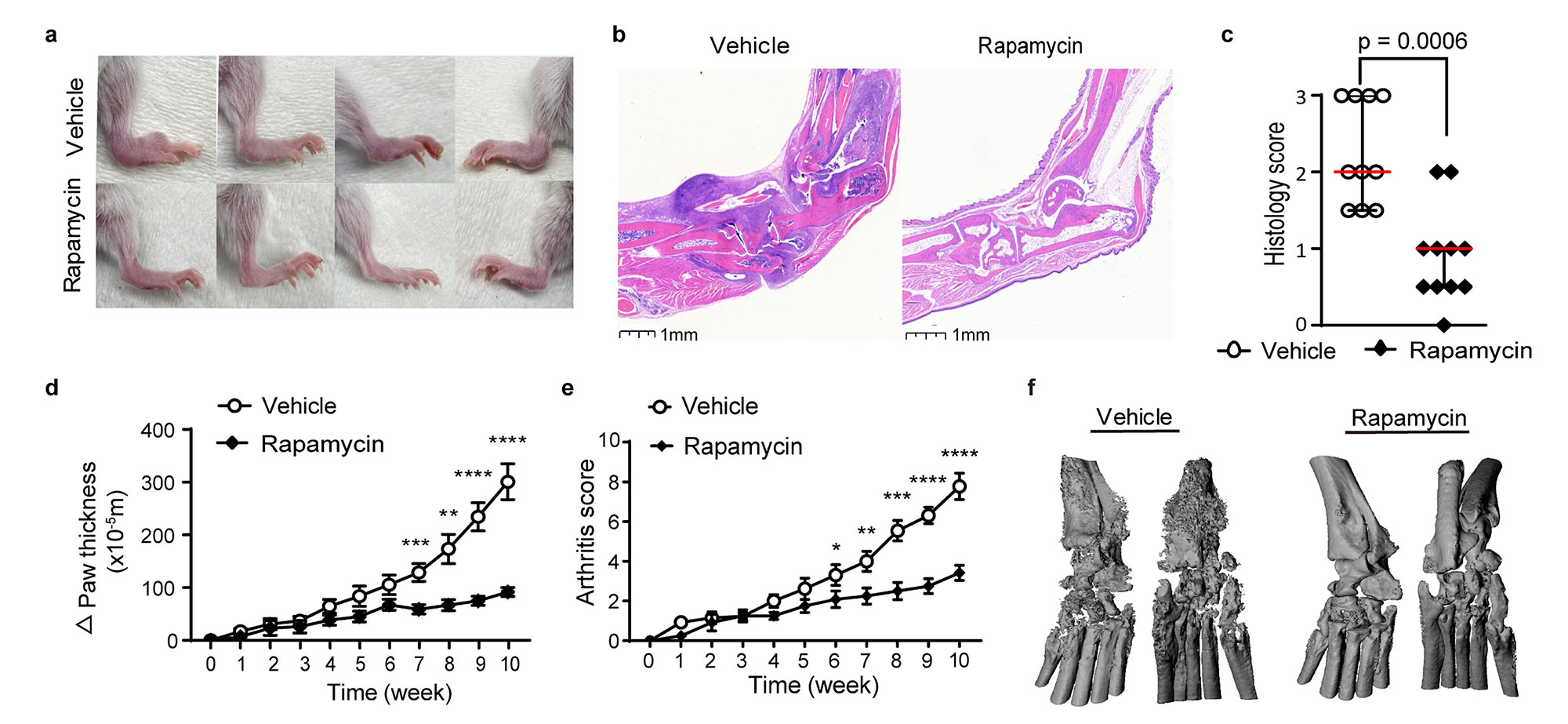Session Information
Date: Saturday, November 12, 2022
Title: Plenary I
Session Type: Plenary Session
Session Time: 11:30AM-1:00PM
Background/Purpose: Systemic juvenile idiopathic arthritis (sJIA) is a severe inflammatory syndrome characterized by fever, skin rash and arthritis. A subset of patients with sJIA develop macrophage activation syndrome (MAS), a potentially fatal complication of immune dysregulation resulting in cytokine storm. We aim to understand the pathologic link between sJIA and MAS.
Methods: We modeled the biology of sJIA using mice deficient in IL1 receptor antagonist (Il1rn-/-) and examined the impact of mTORC1 (mechanistic target of rapamycin complex 1) inhibition and phagocyte depletion. We analyzed available transcriptomic datasets from healthy controls and patients with sJIA. We studied the impact of mTORC1 inhibition on CpG-induced MAS and investigated features of MAS in a murine model of excessive mTORC1 activation.
Results: Il1rn-/- mice recapitulated key features of sJIA including arthritis, systemic inflammation, myeloid cell expansion and splenomegaly. Single-cell RNA sequencing and phospho-flow cytometry analysis of peripheral blood leukocytes from these mice showed preferential activation of the mTORC1 pathway in monocytes. mTORC1 inhibition using rapamycin or monocyte depletion using clodronate liposomes both attenuated disease severity in Il1rn-/- mice (Figure 1). Published transcriptomic datasets from studies on sJIA revealed an mTORC1 gene signature that correlates with disease activity and treatment response. Interestingly, unrestricted activation of mTORC1 by inducible loss of Tsc2 in mice was sufficient to trigger an sJIA-like syndrome, including both inflammatory arthritis and MAS with hemophagocytosis, a cellular manifestation that could be reproduced in human monocytes by CRISPR/Cas-mediated deletion of TSC2 (Figure 2). Consistent with this observation, hemophagocytic histiocytes from patients with MAS displayed prominent mTORC1 activity. Finally, rapamycin treatment prevented hemophagocytosis in Tsc2-inducible KO mice and also attenuated the disease severity of CpG-induced MAS in wildtype C57BL6 mice.
Conclusion: Our study identifies mTORC1 as a driver of inflammation that connects the pathogenesis of sJIA and MAS.
a) Representative depiction of ankle inflammation, b) hematoxylin and eosin staining of ankle sections, c) histologic scores of ankle arthritis, d) ankle and wrist thickness, e) composite arthritis score and f) micro-CT evaluation of joint erosion in Il1rn-/- mice treated with rapamycin or vehicle for 10 weeks (n = 10_14 per group). * p < 0.05, ** p < 0.01, *** p < 0.001, **** p < 0.0001.
To cite this abstract in AMA style:
huang z, You x, Chen L, Du Y, Brodeur K, Wang Q, Sykes D, Chang M, Charles J, Nigrovic P, Lee P. mTORC1 Drives the Spectrum of Pathology in Systemic JIA and Macrophage Activation Syndrome [abstract]. Arthritis Rheumatol. 2022; 74 (suppl 9). https://acrabstracts.org/abstract/mtorc1-drives-the-spectrum-of-pathology-in-systemic-jia-and-macrophage-activation-syndrome/. Accessed .« Back to ACR Convergence 2022
ACR Meeting Abstracts - https://acrabstracts.org/abstract/mtorc1-drives-the-spectrum-of-pathology-in-systemic-jia-and-macrophage-activation-syndrome/


